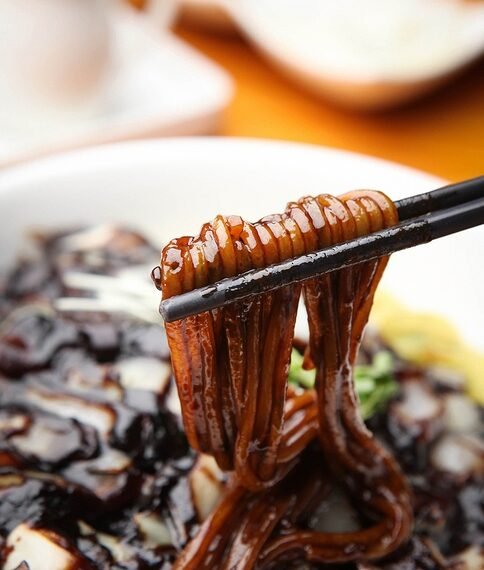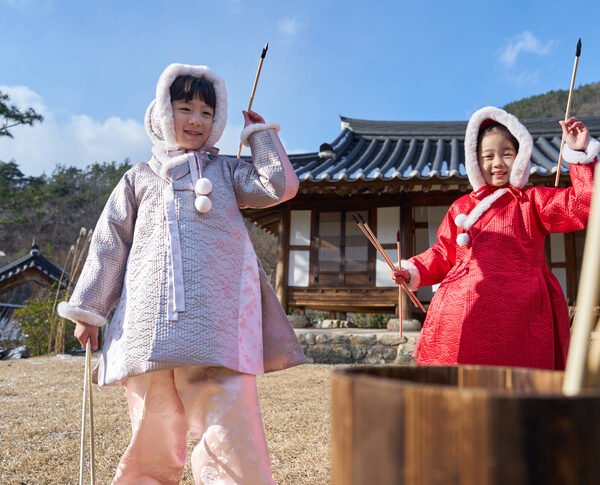In the vibrant and diverse neighborhood of Koreatown in Los Angeles, a new generation of restaurant owners is facing a unique set of challenges. As older owners retire, the next generation must grapple with preserving the neighborhood’s rich dining culture while also adapting to increased costs and fierce competition. With developers eyeing potential in Koreatown, non-Korean restaurants and clubs are opening, posing a threat to the traditional Korean establishments. Some of these beloved restaurants have even relocated to suburban areas. However, these traditional eateries are not just places to eat – they are a vital part of Koreatown’s identity and serve as a hub for Korean American culture. Despite the hardships brought by the pandemic and changing demographics, some owners are finding success by creating a cult following and embracing the power of social media. Striking the delicate balance between honoring the expectations of older customers while meeting the demands of a younger crowd, these second-generation owners are determined to modernize their businesses while preserving their family legacies.

Challenges in Koreatown due to the retirement of older restaurant owners
Koreatown in Los Angeles is facing a unique set of challenges due to the retirement of older restaurant owners. These challenges have a significant impact on the dining culture, as the new generation of owners must find ways to preserve and uphold the traditions and culinary heritage of the area.
Impact on dining culture
The retirement of older restaurant owners has a direct impact on the dining culture of Koreatown. These establishments have been pillars of the community for decades, serving authentic Korean cuisine and providing a space for the Korean American community to gather and connect. With their retirement, there is a risk of losing that authentic dining experience and the sense of community that comes with it.
The next generation of owners must navigate the delicate balance of preserving tradition while also embracing innovation to attract a broader customer base. They need to find ways to honor the recipes and techniques passed down from previous generations while also appealing to the changing tastes and preferences of the younger generation.
Adapting to increased costs
Another challenge that Koreatown faces with the retirement of older restaurant owners is the issue of increased costs. As the neighborhood becomes more popular and desirable, the cost of operating a restaurant in Koreatown has risen significantly. This includes not only increased rent prices but also higher costs for ingredients, labor, and marketing.
The younger restaurant owners must find ways to adapt to these increased costs while still offering affordable and authentic Korean cuisine. This can be a challenging task, as they need to balance the need for profitability with the desire to maintain the affordability and accessibility that has made Koreatown a food destination for many.
Facing competition
Competition is another significant challenge that Koreatown restaurants are encountering due to the retirement of older owners. As the neighborhood attracts more attention and development, there has been an influx of non-Korean restaurants and clubs opening up in the area. While this diversification can be viewed as a positive for the overall development of Koreatown, it also poses a threat to the traditional Korean establishments.
The new generation of owners must find ways to compete with these new establishments while still staying true to their roots. They must differentiate themselves by highlighting their unique Korean flavors, cultural experiences, and the sense of community that comes with dining in a traditional Korean restaurant.
The potential for development in Koreatown
Despite the challenges presented by the retirement of older restaurant owners, Koreatown also holds great potential for development. Developers have recognized the value of the neighborhood and have started opening non-Korean restaurants and clubs, further diversifying the dining and entertainment options in the area.
Opening of non-Korean restaurants and clubs
The opening of non-Korean restaurants and clubs in Koreatown brings a new dynamic to the neighborhood. This diversification can attract a more diverse range of customers and contribute to the overall growth and development of the area. It offers opportunities for the next generation of owners to collaborate and learn from different culinary traditions, creating unique fusion experiences that showcase the multiculturalism of Koreatown.
However, it is crucial to strike a balance between embracing diversity and preserving the traditional Korean identity of the neighborhood. The challenge lies in ensuring that the cultural heritage of Koreatown is not overshadowed or diluted by the new establishments.
Threat to traditional Korean establishments
While the opening of non-Korean restaurants and clubs brings potential for development, it also poses a threat to the traditional Korean establishments in Koreatown. These traditional restaurants have long been the backbone of the neighborhood’s dining scene and serve as a vital part of its identity.
As more non-Korean establishments enter the area, there is a risk of traditional Korean restaurants losing business and struggling to compete. This can result in some of these businesses being forced to relocate to suburban areas, where the cost of operation may be lower, but the sense of community and cultural heritage may be compromised.

Struggles of traditional Korean restaurants
Traditional Korean restaurants in Koreatown face a host of struggles due to various external factors. These struggles include competition with new establishments, the challenge of relocation to suburban areas, and the balance of maintaining tradition and identity.
Competition with new establishments
As mentioned earlier, the influx of non-Korean restaurants and clubs poses a significant challenge to traditional Korean establishments. The competition for customers, especially among the younger generation, has become fiercer. Traditional Korean restaurants must find ways to differentiate themselves and highlight the unique experiences they offer compared to the new establishments in the area.
They may focus on maintaining the authenticity of their cuisine, emphasizing the rich cultural traditions associated with Korean food, and developing personalized customer experiences that foster a sense of connection and community. By emphasizing these unique selling points, traditional Korean restaurants can effectively compete with the new establishments.
Relocation to suburban areas
Due to the increased costs of operating in Koreatown and the challenges posed by new competition, some traditional Korean restaurants have chosen to relocate to suburban areas. While this may be a practical solution in terms of reducing costs, it can also be detrimental to the cultural heritage and identity of Koreatown.
The relocation of these restaurants removes them from the heart of Koreatown, where they have long been an integral part of the community. Furthermore, it can be challenging for customers, who have become accustomed to easy access to these establishments, to make the journey to the suburbs. This can result in a loss of customers and a further decline in business for these traditional Korean restaurants.
Maintaining tradition and identity
One of the most significant struggles faced by traditional Korean restaurants in Koreatown is the challenge of maintaining tradition and identity. As the neighborhood undergoes changes and welcomes new establishments, it is vital for these restaurants to hold onto their authentic culinary traditions and cultural heritage.
To maintain tradition and identity, these restaurants must prioritize the use of high-quality, traditional ingredients and cooking techniques. They should uphold the customs and rituals associated with Korean dining, such as communal eating and the respect for elders. By doing so, traditional Korean restaurants can both honor their rich history and attract customers who seek an authentic Korean dining experience.
Impact of the pandemic on Koreatown restaurants
The COVID-19 pandemic has had a profound impact on restaurants worldwide, and Koreatown in Los Angeles is no exception. The neighborhood’s restaurants have faced significant business decline and have encountered various challenges in their journey towards recovery.
Business decline
The pandemic and resulting lockdown measures have caused a severe decline in business for Koreatown restaurants. With restrictions on indoor dining and reduced foot traffic in the neighborhood, many establishments have struggled to survive. The decline in tourist visits and the hesitancy of locals to dine out further exacerbated the situation.
The lack of business has put a strain on the financial stability of these restaurants, with some owners even having to temporarily close their doors or shut down permanently. The impact of this decline has been particularly harsh for traditional Korean restaurants, as they often rely on steady customer traffic and loyal patrons.
Challenges in recovery
As vaccination rates rise and restrictions ease, Koreatown restaurants are faced with new challenges in their journey towards recovery. Many establishments are dealing with labor shortages, making it difficult to fully reopen or provide the same level of service as before the pandemic.
Furthermore, the recovery process involves rebuilding customer trust and confidence, as many diners remain cautious about dining out in crowded spaces. Restaurants must adapt by implementing and enforcing safety protocols, such as increased sanitization measures, social distancing, and contactless ordering and payment options.
Navigating these challenges requires resilience and adaptability on the part of restaurant owners. They must find creative solutions to attract customers and rebuild the thriving dining culture that Koreatown is known for.

Balancing expectations of different generations
Koreatown restaurant owners face a unique challenge in balancing the expectations of different generations. They must cater to the preferences of older, more traditional customers, while also meeting the demands of younger crowds who seek new experiences and flavors.
Catering to older customers
Koreatown has a significant population of older customers who have been loyal patrons of traditional Korean restaurants for many years. These customers have specific expectations when it comes to the dining experience, including the quality of the food, the ambiance, and the level of service.
To cater to older customers, restaurant owners must prioritize offering authentic, high-quality Korean cuisine that reflects the flavors they have grown accustomed to. They should create a comfortable and welcoming atmosphere that evokes a sense of nostalgia and familiarity. Excellent customer service, attentiveness, and respect for elders are also crucial in meeting the expectations of older customers.
Meeting demands of younger crowds
While older customers remain a vital part of Koreatown’s dining scene, restaurant owners cannot ignore the demands of younger crowds. The younger generation seeks new and innovative food experiences and is often drawn to trendy, fusion concepts. To appeal to this demographic, restaurant owners must explore innovative approaches to Korean cuisine, such as fusion dishes that blend traditional and modern flavors.
In addition to the food itself, younger crowds also value unique dining experiences and aesthetics. Koreatown restaurants can enhance their appeal to the younger generation by creating Instagrammable spaces, incorporating modern design elements, and offering interactive dining options such as DIY cooking experiences.
By striking a balance between meeting the expectations of both older and younger customers, Koreatown restaurants can attract a broader customer base and ensure their long-term success.
The importance of creating a cult following
In the highly competitive dining scene of Koreatown, creating a cult following is crucial for restaurant owners. Building a loyal customer base and utilizing social media for promotion are key strategies that can help establishments thrive.
Building a loyal customer base
Building a loyal customer base involves consistently providing exceptional dining experiences that keep customers coming back. It is about creating a sense of community and connection that extends beyond the restaurant itself. This can be achieved through personalized customer interactions, special events, and loyalty programs.
Koreatown restaurant owners can also foster loyalty by actively engaging with customers and seeking feedback. By listening to their patrons and making improvements based on their suggestions, owners can create a sense of ownership among customers and make them feel valued.
Utilizing social media for promotion
In the digital age, social media has become a powerful tool for restaurant promotion. Koreatown restaurant owners can leverage platforms like Instagram, Facebook, and Yelp to showcase their unique dining experiences, mouthwatering dishes, and engaging atmospheres.
By consistently sharing visually appealing content and interacting with followers, restaurant owners can generate buzz and attract new customers. They can also collaborate with influencers and participate in online food communities to expand their reach and create a cult following.
Utilizing social media does not replace the importance of providing an exceptional dining experience. Instead, it complements it by creating an online presence that reflects the quality and authenticity of the restaurant.
Efforts to modernize while preserving family legacy
Koreatown restaurant owners recognize the need to modernize their businesses to stay relevant and attract a new generation of customers. However, they also face the challenge of preserving their family legacy and cultural heritage.
Updating business practices
To modernize their businesses, Koreatown restaurant owners are embracing technology and implementing new business practices. Online reservation systems, mobile ordering apps, and contactless payment options are becoming increasingly common in the neighborhood’s restaurants. These innovations streamline the dining experience and cater to the preferences of tech-savvy customers.
Owners are also investing in staff training programs to ensure that their teams are adept at providing exceptional service with modern techniques. By equipping their staff with the necessary skills, owners can create a seamless and efficient dining experience for customers.
Maintaining cultural heritage
While modernization is essential, preserving cultural heritage remains a priority for Koreatown restaurant owners. They understand that their restaurants are not just places to enjoy a meal, but also cultural ambassadors that showcase the rich traditions and customs of the Korean community.
Owners make a conscious effort to source traditional ingredients, follow authentic recipes, and replicate the dining experience found in Korea. They embrace the customs and rituals associated with Korean dining, such as sharing meals, using traditional utensils, and practicing respect for elders.
By striking a balance between modernization and cultural preservation, Koreatown restaurant owners can ensure that their establishments remain relevant while honoring their family legacies and contributing to the vibrant culinary landscape of the neighborhood.
In conclusion, Koreatown in Los Angeles faces a unique set of challenges due to the retirement of older restaurant owners. These challenges include preserving the dining culture, adapting to increased costs, and facing competition from non-Korean establishments. Traditional Korean restaurants in Koreatown are striving to maintain their authenticity and overcome obstacles such as relocation and competition. The pandemic has further impacted the restaurant industry, leading to business decline and challenges in recovery. Balancing the expectations of different generations, creating a cult following, and modernizing while preserving family legacies are crucial strategies for success in Koreatown’s dining scene. By navigating these challenges with resilience and an openness to change, Koreatown restaurants can continue to thrive and contribute to the vibrant culinary landscape and cultural heritage of the neighborhood.










